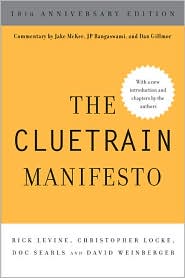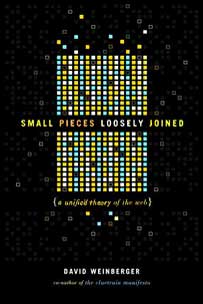February 20, 2011
[2b2k] Public data and metadata, Google style
I’m finding Google Lab’s Dataset Publishing Language (DSPL) pretty fascinating.
Upload a set of data, and it will do some semi-spiffy visualizations of it. (As Apryl DeLancey points out, Martin Wattenberg and Fernanda Viegas now work for Google, so if they’re working on this project, the visualizations are going to get much better.) More important, the data you upload is now publicly available. And, more important than that, the site wants you to upload your data in Google’s DSPL format. DSPL aims at getting more metadata into datasets, making them more understandable, integrate-able, and re-usable.
So, let’s say you have spreadsheets of “statistical time series for unemployment and population by country, and population by gender for US states.” (This is Google’s example in its helpful tutorial.)
-
You would supply a set of concepts (“population”), each with a unique ID (“pop”), a data type (“integer”), and explanatory information (“name=population”, “definition=the number of human beings in a geographic area”). Other concepts in this example include country, gender, unemployment rate, etc. [Note that I’m not using the DSPL syntax in these examples, for purposes of readability.]
-
For concepts that have some known set of members (e.g., countries, but not unemployment rates), you would create a table — a spreadsheet in CSV format — of entries associated with that concept.
-
If your dataset uses one of the familiar types of data, such as a year, geographical position, etc., you would reference the “canonical concepts” defined by Google.
-
You create a “slice” or two, that is, “a combination of concepts for which data exists.” A slice references a table that consists of concepts you’ve already defined and the pertinent values (“dimensions” and “metrics” in Google’s lingo). For example, you might define a “countries slice” table that on each row lists a country, a year, and the country’s population in that year. This table uses the unique IDs specified in your concepts definitions.
-
Finally, you can create a dataset that defines topics hierarchically so that users can more easily navigate the data. For example, you might want to indicate that “population” is just one of several characteristics of “country.” Your topic dataset would define those relations. You’d indicate that your “population” concept is defined in the topic dataset by including the “population topic” ID (from the topic dataset) in the “population” concept definition.
When you’re done, you have a data set you can submit to Google Public Data Explorer, where the public can explore your data. But, more important, you’ve created a dataset in an XML format that is designed to be rich in explanatory metadata, is portable, and is able to be integrated into other datasets.
Overall, I think this is a good thing. But:
-
While Google is making its formats public, and even its canonical definitions are downloadable, DSPL is “fully open” for use, but fully Google’s to define. Having the 800-lbs gorilla defining the standard is efficient and provides the public platform that will encourage acceptance. And because the datasets are in XML, Google Public Data Explorer is not a roach motel for data. Still, it’d be nice if we could influence the standard more directly than via an email-the-developers text box.
-
Defining topics hierarchically is a familiar and useful model. I’m curious about the discussions behind the scenes about whether to adopt or at least enable ontologies as well as taxonomies.
-
Also, I’m surprised that Google has not built into this standard any expectation that data will be sourced. Suppose the source of your US population data is different from the source of your European unemployment statistics? Of course you could add links into your XML definitions of concepts and slices. But why isn’t that a standard optional element?
-
Further (and more science fictional), it’s becoming increasingly important to be able to get quite precise about the sources of data. For example, in the library world, the bibliographic data in MARC records often comes from multiple sources (local cataloguers, OCLC, etc.) and it is turning out to be a tremendous problem that no one kept track of who put which datum where. I don’t know how or if DSPL addresses the sourcing issue at the datum level. I’m probably asking too much. (At least Google didn’t include a copyright field as standard for every datum.)
Overall, I think it’s a good step forward.








